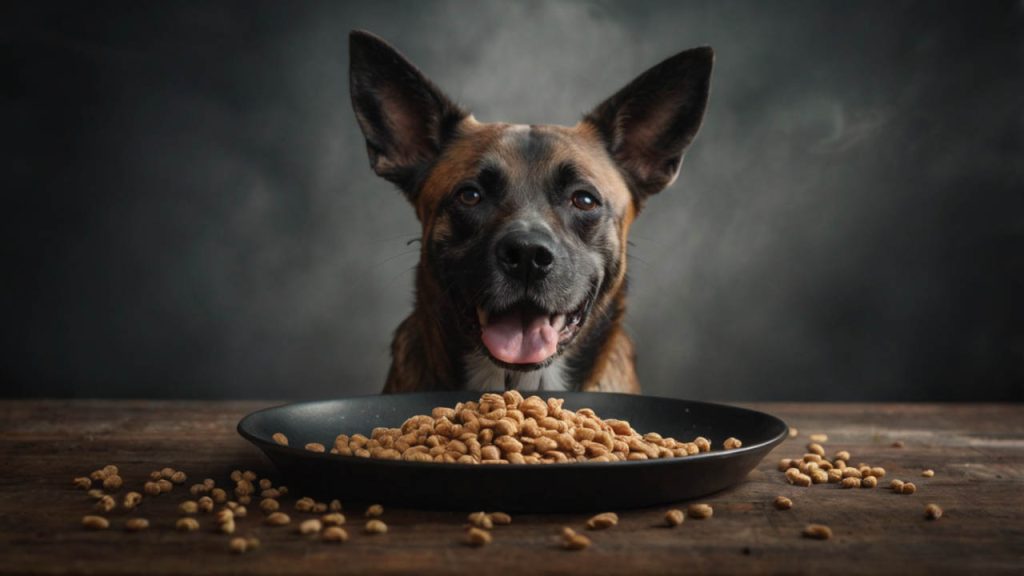Best Food for Dogs with Allergies: The Ultimate Guide to Soothing Your Pet
The constant scratching, the licking of paws, the chronic ear infections—watching your dog suffer from allergies is a frustrating and heartbreaking experience. As a loving owner, you’d do anything to provide them with relief. This often leads you down a confusing path of remedies, with one question standing out above all: what is the best food for dogs with allergies? The truth is, the answer is not a single brand or flavor, but rather a specific type of nutritional strategy designed to calm their overactive immune system. Consequently, understanding these strategies is the key to finally helping your dog feel comfortable in their own skin.
This comprehensive guide provides a complete storyline for navigating the world of canine food allergies. We will start by identifying the true nature of food allergies, explore the different types of specialized diets, and walk you through how to choose the right option for your dog. Therefore, you can move from a state of worried guesswork to one of empowered, effective action.
Understanding Dog Food Allergies: What Are You Really Fighting?
Before you can find the solution, you must fully understand the problem. Not all adverse reactions to food are true allergies. Getting this distinction right is the first step in finding the best food for dogs with allergies.

Food Allergy vs. Food Intolerance: Knowing the Difference
First and foremost, it’s crucial to distinguish between a food allergy and a food intolerance.
- A True Food Allergy: This is an immune system response. Your dog’s body mistakenly identifies a specific protein (usually from a food ingredient) as a harmful invader and launches an inflammatory attack. This is what causes the intense itching and skin issues.
- A Food Intolerance: This is a digestive issue. Your dog’s system simply has difficulty digesting a certain ingredient, which leads to gas, bloating, or diarrhea. It does not involve an immune response.
While both are problematic, true allergies require a more specialized dietary approach.
Common Symptoms of Food Allergies in Dogs
A food allergy can manifest in several ways, and it’s not always about the stomach. The most common signs include:
- Chronic itching, scratching, and biting at the skin (especially paws, face, and ears).
- Recurrent skin and ear infections.
- Hives, rashes, or hot spots.
- Gastrointestinal issues like chronic diarrhea, gas, or occasional vomiting.
- Hair loss and poor coat quality.
Identifying the Most Common Canine Food Allergens
While any food ingredient can theoretically cause an allergy, research has shown that the most common culprits are the proteins that dogs have been most frequently exposed to over time. According to a study published in BMC Veterinary Research, the most frequent offenders are:
- Beef
- Dairy Products
- Chicken
- Wheat
- Lamb
This is why simply switching from a chicken-based food to a lamb-based food often fails; you might just be swapping one common allergen for another.

The First Step: Why You Must Consult Your Veterinarian
Before you change your dog’s diet, you must get a professional diagnosis. Many other conditions, such as environmental allergies (to pollen, dust mites, etc.), flea allergy dermatitis, or skin infections, can cause the exact same symptoms as a food allergy.
Your veterinarian is the only one who can rule out these other causes. Furthermore, they will guide you through the “gold standard” for diagnosing a food allergy: the elimination diet. This involves feeding your dog a special diet for 8-12 weeks to see if their symptoms resolve. This vet-supervised process is the only definitive way to confirm a food allergy and is a critical step before searching for the best food for dogs with allergies.
Types of the Best Food for Dogs with Allergies
Once a food allergy is suspected or confirmed, you can explore specialized diets. These foods are designed around three key principles: limiting ingredients, using novel proteins, or using hydrolyzed proteins.
Limited Ingredient Diets (LID): The Power of Simplicity
A Limited Ingredient Diet is exactly what it sounds like. These formulas contain a single source of animal protein and a single source of carbohydrate, plus the necessary vitamins and minerals.
- How They Work: By dramatically simplifying the ingredient list, you minimize the number of potential allergens your dog is exposed to. If your dog is allergic to chicken, an LID that uses only salmon and sweet potato removes the trigger entirely.
- Who They’re For: LIDs are an excellent starting point for most dogs with suspected food allergies. They are widely available and offer a straightforward way to avoid known allergens. They are often considered the best food for dogs with allergies that are mild to moderate.
Novel Protein Diets: Exploring New Territory
A novel protein is simply a protein source that your dog has likely never been exposed to before.
- How They Work: A food allergy develops over time with exposure. Since your dog’s immune system has never “seen” a protein like kangaroo, duck, venison, or even alligator, it is highly unlikely to have an allergic reaction to it.
- Who They’re For: These diets are perfect for dogs who have been on common proteins like chicken and beef and have not found relief with a standard LID. They are a core strategy for finding the best food for dogs with allergies.
Hydrolyzed Protein Diets: The Ultimate Solution for Severe Allergies
For dogs with severe or multiple allergies, a hydrolyzed protein diet is often the most effective solution.
- How They Work: In these prescription diets, the protein (often chicken or soy) is broken down into molecules so small that the dog’s immune system can no longer recognize it as an allergen. The inflammatory response is therefore never triggered.
- Who They’re For: These diets are typically available only by prescription from a veterinarian. They are the gold standard for conducting a true elimination diet and for managing dogs who seem to be allergic to almost everything.
How to Choose the Best Food for Dogs with Allergies: A Checklist
When you’re standing in the pet food aisle, the options can be overwhelming. Use this checklist to decode the labels.
Decoding the Ingredient Label: What to Look For
- A Single, Clearly Named Animal Protein Source: Look for “duck” or “salmon,” not vague terms like “meat meal” or “poultry.”
- Whole Food Carbohydrates: Ingredients like sweet potatoes, peas, or oats are generally better than fillers like corn or wheat.
- Omega Fatty Acids: Look for ingredients like fish oil or flaxseed. Omega-3 and Omega-6 fatty acids are crucial for reducing inflammation and promoting healthy skin and coat.
What to Avoid: Fillers and Common Irritants
- Artificial colors, flavors, and preservatives.
- Vague ingredient descriptions.
- Common allergens like beef, chicken, dairy, and wheat, unless you know for a fact your dog is not allergic to them.
Transitioning to the New Food: A Slow and Steady Approach
Once you’ve chosen the best food for dogs with allergies under your vet’s guidance, you must transition them to it slowly. Switching food abruptly can cause digestive upset, which is the last thing your dog needs.
Follow this simple schedule over 7-10 days:
- Days 1-3: 75% old food, 25% new food.
- Days 4-6: 50% old food, 50% new food.
- Days 7-9: 25% old food, 75% new food.
- Day 10: 100% new food.
Conclusion: A Strategic Approach to Allergy Relief
Finding the best food for dogs with allergies is not about finding a magic brand; it’s about adopting a strategic, methodical approach. The journey begins with a crucial partnership with your veterinarian to get an accurate diagnosis. From there, you can explore the world of Limited Ingredient, Novel Protein, or Hydrolyzed Protein diets to find the formula that eliminates your dog’s specific triggers.
By carefully reading labels and transitioning to the new food slowly, you are providing the best possible nutritional support for your itchy companion. The road to an allergy-free life can be long, but the reward—a happy, comfortable, and itch-free dog—is worth every step.
Have you found a food that works wonders for your allergic dog? Share your success stories and favorite brands in the comments below to help other pet owners on their journey!



 Best Food for Dogs with Allergies: Complete Guide
Best Food for Dogs with Allergies: Complete Guide